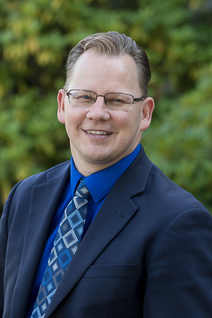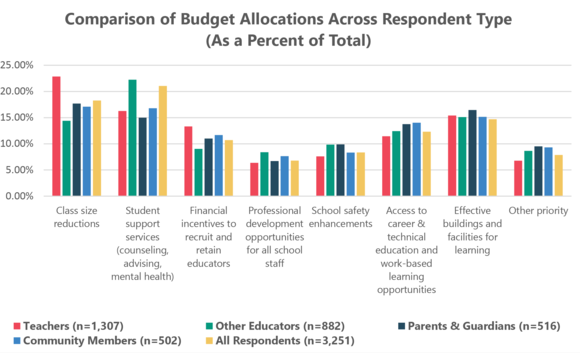The proposal aims to close opportunity gaps by increasing spending on comprehensive supports, pathways to graduation, and creating a new model for funding elementary school buildings.
 OLYMPIA—October 9, 2018—More nurses and middle school counselors. Dual language education. Increased funding for students with disabilities.
These and other items are included in Superintendent of Public Instruction Chris Reykdal’s proposal for the 2019–21 Operating and Capital Budgets.
“The Legislature has made great strides in education funding,” Reykdal said. “But we can’t continue to use a 10-year-old funding model that was not enough even at the time it was created. Our students deserve an education system that does not allow opportunity gaps to persist. That can only happen if our system provides equitable opportunities and individual learning pathways for each student.”
|
Budget proposal
Following two surveys of
the public, Reykdal’s budget priorities center on six foundational ideas. Most
of them will prioritize schools who are most in need of support before being
phased-in to full funding across all buildings. A summary of a few of the proposals is below.
-
Inclusive and effective learning and teaching. $180 million would increase
funding for students with disabilities and provide additional professional learning
days for all school staff.
-
Comprehensive supports. $60 million would provide more school nurses, middle school
counselors, and family and community engagement coordinators.
-
Multiple pathways to graduation. $65 million would expand dual credit and career and technical education (CTE) programs,
including opportunities for students to receive required academic credits in
CTE courses.
-
Expanded learning opportunities. $10 million would fund a
pilot program for school districts or tribal compact schools to extend or
expand the school day or year, or switch to a year-round schedule.
-
Safe and effective school facilities. $400 million would allow
OSPI to create a new funding model for elementary schools, which will build
capacity to meet the state’s K–3 class size ratios. The proposal would also
create a new program to assist primarily rural schools in preserving and
maintaining buildings.
-
Dual language. $14 million would allow 12 additional school districts and
tribal compact schools to receive competitive grant funding for dual language
programs. Funding would also expand capacity to teach in
these programs by providing stipends and bonuses to bilingual teachers and
paraeducators.
Reykdal outlined many of these
ideas when he unveiled his long-term
vision for K–12 education in May 2017.
“We have to look years into the
future,” he said. “The old model of basic education was only the first step. We
need to shift our focus onto what will transform
our educational system. Our system can only claim success if it truly provides
equitable opportunity and an unprecedented embrace of individual learning
pathways for each student.”
Bringing balance to local
funding
Another key aspect of
Reykdal’s budget priorities involves addressing inequities created by recent
changes to education funding.
Last year, the
Legislature capped the amount of money school districts can raise through local
levies. State law now allows districts to collect no more than the lesser of
two amounts: $2,500 per student or $1.50 per $1,000 of assessed property value
in the district.
Reykdal proposes a much
simpler levy plan, where total levy authority cannot exceed 22 percent of a school
district’s state and federal revenues.
“Without critical
changes, the reduction in levies will leave some districts in a very tough
financial situation,” said Reykdal. “We were never comfortable with taking away
the ability of local communities to enhance their schools. Local levies
typically fund afterschool programs, early learning, and other vital programs.
School districts need to have more flexibility so they can meet the individual
needs of their communities.”
Reykdal will propose a
capital gains tax, which will generate about $1 billion per year. Under
Reykdal’s proposal, half of that money will go toward reducing state property
taxes to ease the burden on homeowners if districts want to increase levies. The
other half will be spent on OSPI’s proposed budget priorities.
Reykdal also urged the
Legislature to reexamine its regionalization model, which provides more money
for some districts with higher property values. Reykdal said the model was a
unique calculation for each district and not regionally based.
“Educators do not
necessarily live in the districts where they teach,” he said. “The new model
creates funding levels for neighboring districts that share no real differences
in housing values or cost of living. Southwest Washington was hit particularly
hard by this model.”
Second budget survey results
A survey taken this past spring asked Washingtonians to identify their priorities in K–12 education. A second survey, completed at the end of the summer, asked the public to allocate funding to the top seven categories identified in the first survey by more than 30,000 respondents.
Those taking the second survey allocated more than half of the total funding to the following three categories: student support services (21.1 percent), class size reductions (18.3 percent), and effective buildings and facilities for learning (14.7 percent).
 *n=sample size
*The “Other Educators” grouping includes survey participants who indicated they are a superintendent, school board director, principal, school or district administrator, classified employee, paraeducator, educational staff associate, non-profit employee working with schools, or other.
“The public has been very clear about what is important to them,” Reykdal said. “This input was invaluable to us as we built our budget requests.”
About OSPI
The Office of Superintendent of Public Instruction (OSPI) is the primary agency charged with overseeing K–12 education in Washington state. Led by State School Superintendent Chris Reykdal, OSPI works with the state’s 295 school districts and nine educational service districts to administer basic education programs and improve student achievement on behalf of more than one million public school students.
OSPI provides equal access to all programs and services without discrimination based on sex, race, creed, religion, color, national origin, age, honorably discharged veteran or military status, sexual orientation, gender expression or identity, the presence of any sensory, mental, or physical disability, or the use of a trained dog guide or service animal by a person with a disability. Questions and complaints of alleged discrimination should be directed to the Equity and Civil Rights Director at (360) 725-6162 or P.O. Box 47200, Olympia, WA 98504-7200.
Nathan Olson
OSPI Communications Director
360-725-6015
|